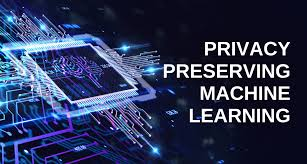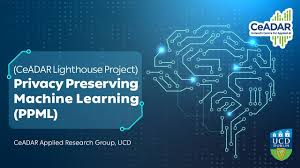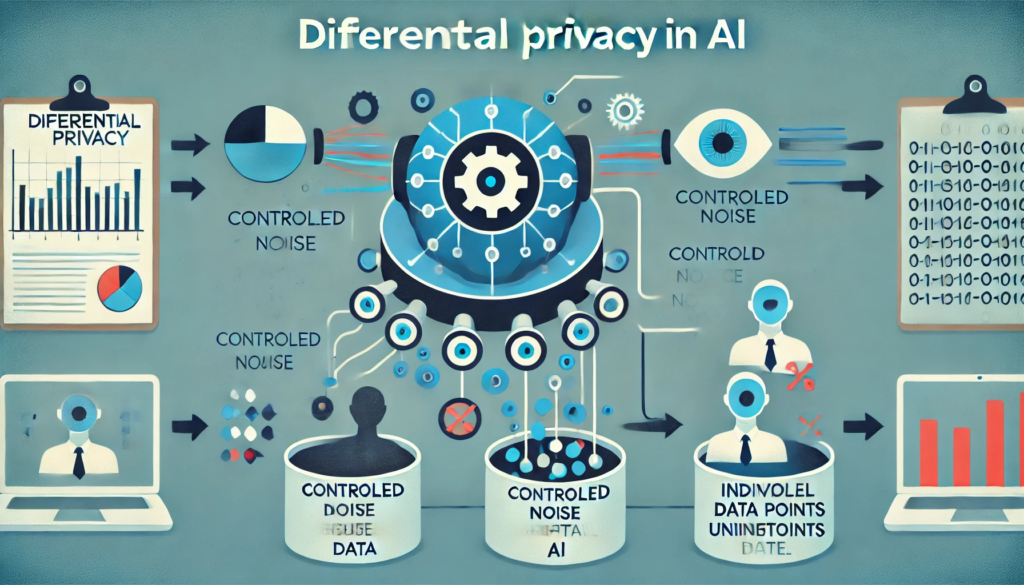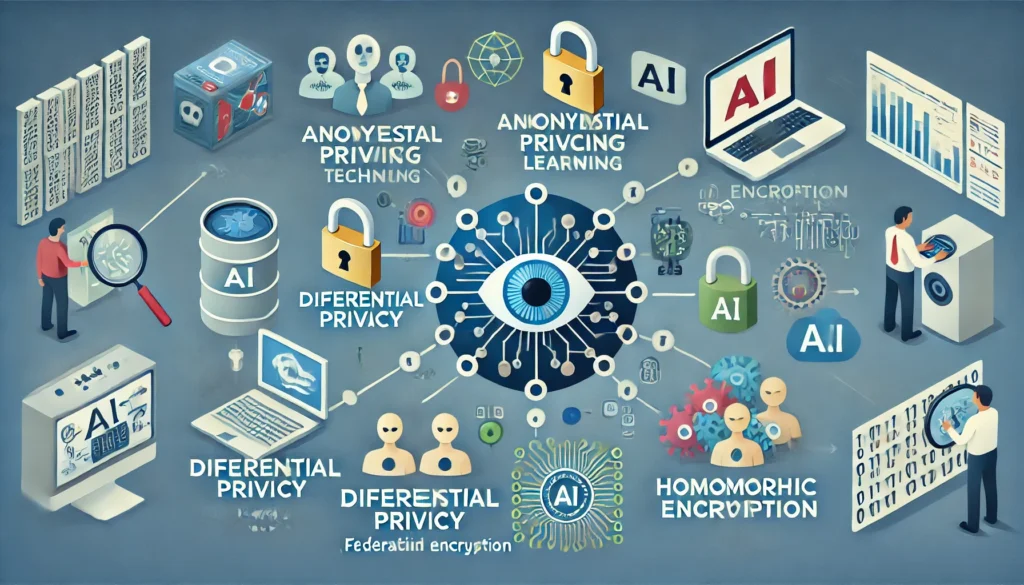Privacy-Preserving Techniques in Machine Learning: Ensuring Secure AI 2024

In the age of big data and AI, ensuring privacy in machine learning (ML) has become more critical than ever. Many ML applications involve sensitive personal data, including health records, financial transactions, and biometric data. Without proper privacy-preserving techniques, these systems risk data leaks, breaches, and regulatory violations.
This blog explores: ✅ Why privacy matters in ML
✅ Key privacy-preserving techniques
✅ Strengths & weaknesses of each method
✅ Best practices for implementing privacy in AI models
Why is Privacy in Machine Learning Important?

Machine learning models require large datasets, but these datasets often contain sensitive information. Privacy risks arise when:
- ML models memorize sensitive data, leading to inference attacks.
- Data is centralized, making it vulnerable to hacks and breaches.
- Regulatory requirements (GDPR, CCPA, HIPAA) demand strict data handling.
🚨 Example:
A medical AI model trained on patient records must protect identities while learning from data. Without privacy measures, attackers could reconstruct patient conditions from model outputs.
Privacy-Preserving Techniques in ML
To secure AI models while maintaining their usefulness, several privacy-enhancing techniques have been developed.
1. Anonymization
🚀 Goal: Remove identifiable details from datasets before training ML models.
🔹 How it Works:
- Direct identifiers (names, phone numbers) are removed.
- Advanced anonymization techniques like k-anonymity & l-diversity prevent re-identification.
🔎 Example:
An anonymized hospital dataset removes patient names, but ZIP code + birth year + gender could still reveal individuals. k-anonymity ensures each person shares attributes with at least k others, reducing re-identification risk.
✅ Strengths:
✔️ Simple & widely used
✔️ Works for tabular datasets
❌ Weaknesses:
⚠️ Vulnerable to re-identification attacks
⚠️ Reduces data granularity & utility
2. Differential Privacy (DP)
🚀 Goal: Prevent models from memorizing sensitive data.
🔹 How it Works:
- Introduces controlled noise into queries or training data.
- Ensures that the output remains nearly the same, whether or not any individual’s data is included.
🔎 Example:
A smartphone AI assistant suggests words based on user typing habits. Differential privacy ensures that adding or removing one person’s chat history doesn’t significantly change the AI’s behavior.
✅ Strengths:
✔️ Mathematically guarantees privacy
✔️ Works well for large datasets
❌ Weaknesses:
⚠️ Adding noise may reduce model accuracy
⚠️ Requires careful tuning of privacy parameters
3. Homomorphic Encryption (HE)
🚀 Goal: Enable computation on encrypted data without decrypting it.
🔹 How it Works: 1️⃣ Data is encrypted before sharing.
2️⃣ AI model performs computations on encrypted data.
3️⃣ The results are decrypted by the data owner.
🔎 Example:
A bank wants to predict loan approvals without accessing customer details. Homomorphic encryption allows the model to process encrypted financial data without seeing raw transactions.
✅ Strengths:
✔️ Strongest cryptographic privacy
✔️ Prevents server-side data leaks
❌ Weaknesses:
⚠️ Computationally expensive (slow processing)
⚠️ Limited operations (addition/multiplication)
4. Multi-Party Computation (MPC)
🚀 Goal: Allow multiple parties to train AI without sharing raw data.
🔹 How it Works:
- Each data owner encrypts their data.
- A centralized or decentralized system performs ML computations.
- Results are aggregated without exposing individual inputs.
🔎 Example:
A group of hospitals want to build a shared cancer prediction model without exchanging patient records. MPC allows collaborative training without data exposure.
✅ Strengths:
✔️ Enables collaborative ML across sensitive industries
✔️ Works well for federated AI applications
❌ Weaknesses:
⚠️ Requires high bandwidth & computing power
⚠️ Can be slow for complex models
5. Federated Learning (FL)
🚀 Goal: Train models decentrally without moving data to a central server.
🔹 How it Works: 1️⃣ A global AI model is shared with user devices.
2️⃣ Each device trains the model locally with its own data.
3️⃣ Devices send only model updates (not raw data) to a central server.
4️⃣ The global model is updated based on combined learning.
🔎 Example:
Google’s Gboard keyboard improves text prediction without collecting user typing data. Instead, each phone updates the AI model locally, sharing insights without raw data.
✅ Strengths:
✔️ Best for mobile & IoT AI
✔️ Avoids centralized data storage risks
❌ Weaknesses:
⚠️ Requires fast network connections
⚠️ Model updates may still leak sensitive trends
Comparing Privacy-Preserving Techniques
| Technique | Best For | Strengths | Weaknesses |
|---|---|---|---|
| Anonymization | Data publishing & sharing | Simple, effective | Vulnerable to re-identification |
| Differential Privacy | AI model training & analytics | Strong privacy guarantee | Reduces accuracy |
| Homomorphic Encryption | Secure cloud ML | No raw data exposure | Computationally expensive |
| Multi-Party Computation | Collaborative AI across organizations | Secure, decentralized | High network costs |
| Federated Learning | AI on mobile/edge devices | No central data storage | May leak usage trends |
📌 Best Practice: Use multiple privacy techniques together for maximum protection.
Best Practices for Privacy in AI Systems

🔹 Minimize Data Collection – Use only the data necessary for AI models.
🔹 Encrypt Data at Rest & in Transit – Ensure end-to-end encryption.
🔹 Apply Access Controls – Restrict who can access AI models & data.
🔹 Regular Privacy Audits – Detect data leaks & security risks.
🔹 Implement Privacy by Design – Build AI with privacy-first architecture.
📌 Example: A health AI company stores all patient records with encryption, applies differential privacy to model training, and ensures federated learning is used for decentralized AI improvements.
The Future of Privacy in AI

🚀 1. AI-Powered Privacy – Using AI to detect & block privacy risks automatically.
🌍 2. Privacy Regulations (GDPR, AI Act) – New laws will mandate stronger AI privacy protections.
🔄 3. Privacy-Preserving AI Market Growth – Businesses will adopt privacy-first AI as a competitive advantage.
📌 Key Takeaway:
Privacy is essential for trust in AI. Implementing privacy-preserving ML techniques ensures that AI remains secure, fair, and ethical.
Final Thoughts
AI models must balance privacy with usability. By integrating techniques like differential privacy, federated learning, and homomorphic encryption, organizations can build AI that protects users while delivering insights.
🔐 Want to make your AI privacy-safe?
✅ Start encrypting sensitive data, anonymizing datasets, and decentralizing ML workflows! 🚀